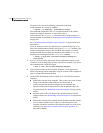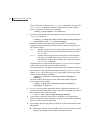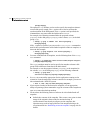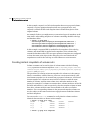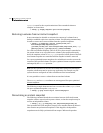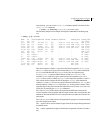
336 Administering volume snapshots
Creating instant snapshots
Adding snapshot mirrors to a volume
If you are going to create a full-sized break-off snapshot volume, you can use the
following command to add new snapshot mirrors to a volume:
# vxsnap [-b] [-g diskgroup] addmir volume|volume_set \
[nmirror=N] [alloc=storage_attributes]
Note: The volume must have been prepared using the vxsnap prepare command
as described in “Preparing a volume for DRL and instant snapshots” on
page 275.
If a volume set name is specified instead of a volume, the specified number of
plexes is added to each volume in the volume set.
By default, the
vxsnap addmir command adds one snapshot mirror to a volume
unless you use the nmirror attribute to specify a different number of mirrors.
The mirrors remain in the SNAPATT state until they are fully synchronized. The
-b option can be used to perform the synchronization in the background. Once
synchronized, the mirrors are placed in the SNAPDONE state.
For example, the following command adds 2 mirrors to the volume, vol1, on
disks mydg10 and mydg11:
# vxsnap -g mydg addmir vol1 nmirror=2 alloc=mydg10,mydg11
Note: This command is similar in usage to the vxassist snapstart command,
and supports the traditional third-mirror break-off snapshot model. As such, it
does not provide an instant snapshot capability.
Once you have added one or more snapshot mirrors to a volume, you can use the
vxsnap make command with either the nmirror attribute or the plex attribute
to create the snapshot volumes.
Removing a snapshot mirror
To remove a single snapshot mirror from a volume, use this command:
# vxsnap [-g diskgroup] rmmir volume|volume_set
For example, the following command removes a snapshot mirror from the
volume, vol1:
# vxsnap -g mydg rmmir vol1



